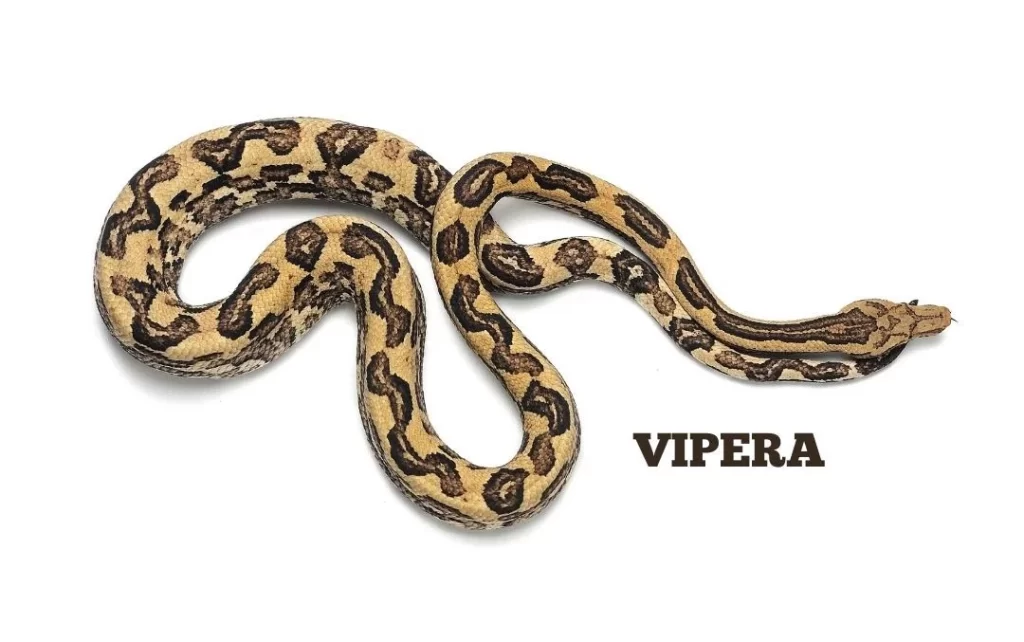Vipera, also known as the German Viper, is a potent homeopathic remedy derived from the venom of the viper snake.
With its origin deeply rooted in the natural world, this remedy offers therapeutic benefits for a range of conditions related to blood vessels, inflammation, and paralysis.
Let us explore the fascinating details of Vipera and its medicinal properties.

Table of Contents
ToggleSOURCE INFORMATION
Scientific Classification: Vipera belongs to the Ophidia class and is specifically derived from the venom of the German Viper snake.
Origin and Distribution: The German Viper is native to various regions of Europe and is known for its venomous bite. Vipera venom is carefully processed to create the homeopathic remedy used in therapeutic applications.
Interesting Facts: Vipera poisoning causes temporary paralysis, particularly affecting the lower extremities.
It is characterized by a paraplegia that ascends upwards, resembling acute ascending paralysis.
The remedy is also noted for its action on the kidneys, inducing haematuria, and its efficacy in treating cardiac dropsy.
DRUG PATHOGENESIS
- Vipera primarily affects the blood and blood vessels, leading to hemorrhages and inflammation of the vessels themselves.
- It is indicated in conditions such as phlebitis, lymphangioma, varicose veins, enlargement of the liver, polyneuritis, and poliomyelitis.
KEY CHARACTERISTICS
- Bursting sensation and unbearable pain in affected limbs, particularly in cases of varicose veins and acute phlebitis.
- Swollen, sensitive, and painful veins with a bursting sensation.
- Violent pain in the enlarged liver during jaundice and fever, with radiation to the shoulder and hip.
PARTICULAR ORGAN SYMPTOMS
Head: Heavy, pressing-outward pain.
Liver: Violent pain in enlarged liver with jaundice and fever, extending to the shoulder and hip.
Extremities: Patient feels compelled to keep extremities elevated due to unbearable pain when allowed to hang down.
Veins are swollen, sensitive, and painful with a bursting sensation.
Skin: Livid skin with peeling in large plates. Presence of lymphangioma, boils, and carbuncles with a bursting sensation, relieved by elevating the affected parts.
MODALITIES
- Worse: Winter; 11 a.m.
- Compare: Lycopodium.
WHAT ARE MODALITIES IN HOMOEOPATHY?
RELATIONSHIP WITH OTHER DRUGS
- Pelius berus (Adder): Similar symptoms of prostration, fainting, skin yellowing, and abdominal pain.
- Eel serum: Used for heart and kidney diseases, particularly in cases of failure of compensation and impending asystole.
DOSE
- Vipera is typically prescribed in the twelfth potency according to individual symptoms and sensitivity.
Frequently Asked Questions
What are the principal uses of Vipera?
- Vipera is primarily used for conditions such as varicose veins, acute phlebitis, enlargement of the liver, and polyneuritis.
What are some common symptoms indicating the need for Vipera?
- Common symptoms include bursting sensation and unbearable pain in affected limbs, violent pain in the liver during jaundice and fever, and livid skin with peeling.
What are some remedies similar to Vipera?
- Remedies such as Lycopodium share similar symptoms and conditions with Vipera.
Meaning of Difficult Words
- Paraplegia: Paralysis of the lower half of the body.
- Phlebitis: Inflammation of a vein, typically in the legs.
- Lymphangioma: A benign tumour formed by an abnormal collection of lymphatic vessels.
- Haematuria: The presence of blood in urine.
- Poliomyelitis: A viral infection that can result in paralysis, muscle weakness, and other symptoms.
- Asystole: Absence of heart contractions.
